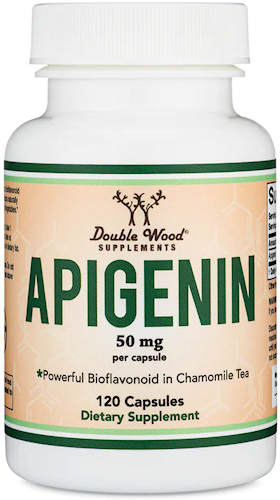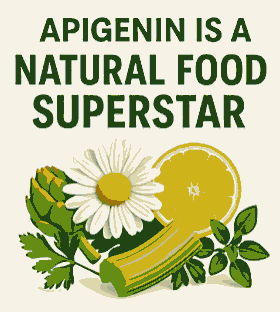🧪 What Kind of Antioxidant Is Apigenin?
Apigenin is a polyphenolic flavonoid in the flavone subclass, found in chamomile, parsley, and citrus peels. It functions both as a direct free radical scavenger and an indirect antioxidant by enhancing your body's own protective systems.
🔥 Free Radicals Apigenin Helps Neutralize
- Superoxide (O₂⁻) – Reduces excess ROS at the cellular level.
- Hydroxyl radicals (•OH) – Protects cells from the most reactive and damaging oxidants.
- Hydrogen peroxide (H₂O₂) – Supports detox through catalase and peroxidase activation.
- Peroxynitrite (ONOO⁻) – Shields mitochondria and DNA from nitrosative stress.
- Lipid peroxides – Defends cellular membranes from oxidative damage.
🤝 A Team Player in the Antioxidant Network
Apigenin works synergistically with other antioxidants by:
- Enhancing the activity of glutathione, catalase, and SOD (superoxide dismutase).
- Complementing nutrients like vitamin C, vitamin E, and quercetin.
- Reducing oxidative load so other antioxidants remain effective longer.
🔬 Additional Mechanisms of Action
- Neuroprotective: Modulates GABA-A receptors and protects neurons from oxidative and inflammatory damage.
- Anti-inflammatory: Inhibits inflammatory pathways (NF-κB, COX-2) and reduces cytokine levels.
- Senolytic: Promotes autophagy and helps clear senescent (damaged) cells from tissues.
- DNA & Mitochondrial Defense: Protects genetic material and supports cellular energy production.




